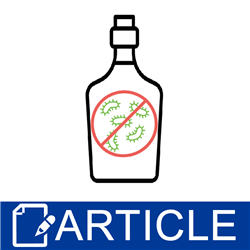| Hurdle Technology | ||
| Author: Allison B. Vought Friday, August 17, 2018 |
|
|
A quick look into the concept of Hurdle Technology.
Definition: The combination of different preservation factors, or hurdles, to stop the growth of microorganisms.
Anhydrous Cosmetic: Classification of product containing no water. Reducing or eliminating water content is a simple way to avoid or reduce the use of traditional preservatives.
Low pH: Most bacteria thrive at a pH level of 6.5 – 7.0. Fungi thrive at pH levels from 5.0 – 6.0. Cosmetics with a pH below 5.0 may be able to self-preserve.
Heat: It can be utilized as a treatment for specific raw materials or during the entire manufacturing process to reduce initial microbial count.
Chelating Agents: EDTA or phytic acid can boost efficacy of some preservatives allowing for lower usage rates in formulation.
Emulsion type: It can help control microbial count. It is more difficult for microbes to establish themselves in water-in-oil (W/O) emulsions than oil-in-water (O/W) emulsions, thus reducing the required preservative load.
Packaging: Packaging such as airless pumps and single-use packaging reduce outside contamination and oxidation, allowing for longer and more stable shelf-life. Such packaging may also reduce or eliminate the need for a preservative dependent upon your formulation.
Good Manufacturing Practices (GMP): It assists with hurdle technology by reducing the initial microbial load on a product. By reducing or eliminating as many components that might cause contamination or the introduction of microbes, you create a “hurdle” for the growth of microbial colonies in your product.
Anhydrous Cosmetic: Classification of product containing no water. Reducing or eliminating water content is a simple way to avoid or reduce the use of traditional preservatives.
Low pH: Most bacteria thrive at a pH level of 6.5 – 7.0. Fungi thrive at pH levels from 5.0 – 6.0. Cosmetics with a pH below 5.0 may be able to self-preserve.
Heat: It can be utilized as a treatment for specific raw materials or during the entire manufacturing process to reduce initial microbial count.
Chelating Agents: EDTA or phytic acid can boost efficacy of some preservatives allowing for lower usage rates in formulation.
Emulsion type: It can help control microbial count. It is more difficult for microbes to establish themselves in water-in-oil (W/O) emulsions than oil-in-water (O/W) emulsions, thus reducing the required preservative load.
Packaging: Packaging such as airless pumps and single-use packaging reduce outside contamination and oxidation, allowing for longer and more stable shelf-life. Such packaging may also reduce or eliminate the need for a preservative dependent upon your formulation.
Good Manufacturing Practices (GMP): It assists with hurdle technology by reducing the initial microbial load on a product. By reducing or eliminating as many components that might cause contamination or the introduction of microbes, you create a “hurdle” for the growth of microbial colonies in your product.
